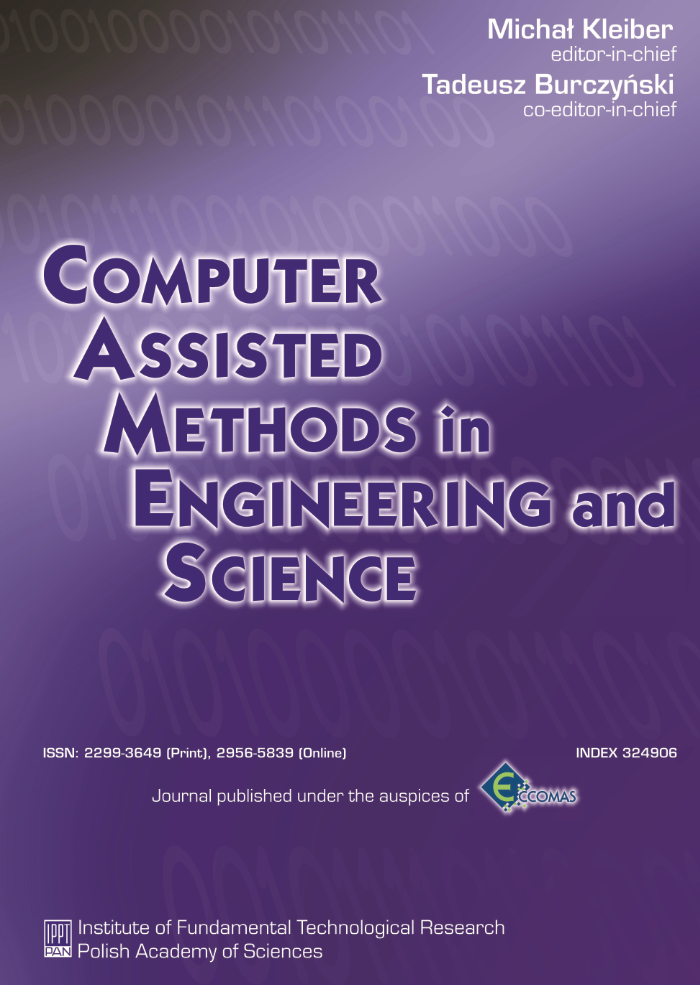Abstract
This paper presents application of artificial neural networks (ANNs) for prediction of consistency parameters (plastic limit, liquid limit) of fen soils in comparison with the standard regression analysis. All samples of cohesive soils were retrieved from the Wisłok river floodplain, in the vicinity of Rzeszów, near Lisia Góra (Fox Mountain) reserve. Basic fractions (clay, silt, sand) of fen soils are independent variables in modeling of soil properties. Two regression models and a standard multi-layer back-propagation net have been used.
Keywords:
fen soils, granulation, plastic limit, liquid limit, regression, artificial neural networksReferences
[2] H. Demuth, M. Beale. Neural network toolbox user’s guide. Version 3.0, The MathWorks Inc., Natick, MA, USA, 1998.
[3] Z. Glazer, J. Malinowski. Geology and geotechnics for civil engineers. Scientific Publishing House (PWN), Warsaw, 1991.
[4] J. Jaremski, K. Wilk. Influence of fen soils moisture changes on the strength parameters and applied foundation solutions. Proceedings of the 10th International Congress of the IAEG, Nottingham, 2006.
[5] M. Klos, M.J. Sulewska, Z. Waszczyszyn. Neural identification of compaction characteristics for granular soils, Computer Assisted Mechanics and Engineering Sciences (CAMES), 18(4): 265-–273, 2011.
[6] T.W. Lambe, R.V. Whitman. Soil mechanics. Vol. 1, Arkady, Warsaw, 1977.
[7] E. Myślińska. Engineering-geological problems in investigations on soft soils in river valleys. 6th International IAEG Congress, Balkema, Rotterdam, 1990.
[8] T.S. Nagaraj, N. Miura. Soft clay behaviour: analysis and assessment. A.A. Balkema, 2001.
[9] S. Pisarczyk. Knowledges about engineering soils. Scientific Publishing House (PWN), Warsaw, 2001.
[10] J. Sekowski. Correlational relationships of plasticity features of cohesive soils. Engineering and Construction, 10, 1993.
[11] A. Sridharan. Engineering behaviour of marine clays. Proceedings of the International Conference on Offshore and Nearshore Geotechnical Engineering, Keynote Lecture 3, 49–64, 1999.
[12] M. Sulewska. Applying artificial neural networks for analysis of geotechnical problems, Computer Assisted Mechanics and Engineering Sciences (CAMES), 18(4): 230–241, 2011.
[13] M. Sulewska. Artificial neural modeling of compaction characteristics of cohesionless soil, Computer Assisted Mechanics and Engineering Sciences (CAMES), 17(3): 27–40, 2010.
[14] Z. Waszczyszyn. Artificial neural networks in civil and structural engineering. Ten years of research in Poland. Computer Assisted Mechanics and Engineering Sciences (CAMES), 13(4): 489–512, 2006.
[15] Z.Waszczyszyn. Artificial neural networks in civil engineering: another five years of research in Poland. Computer Assisted Mechanics and Engineering Sciences (CAMES), 18(3): 131–146, 2011.
[16] K. Wilk. Cohesive fen ground as the subsoil of building objects [in Polish], doctoral dissertation, 2008.
[17] K. Wilk. Relationship between consistency parameters and granulation of fen soils. Construction and Architecture, 12(3): 2013.
[18] J-H. Yin. Properties and behaviour of Hong Kong marine deposits with different clay contents. Canadian Geotechnical Journal, 36: 1085–1095, 1999.






